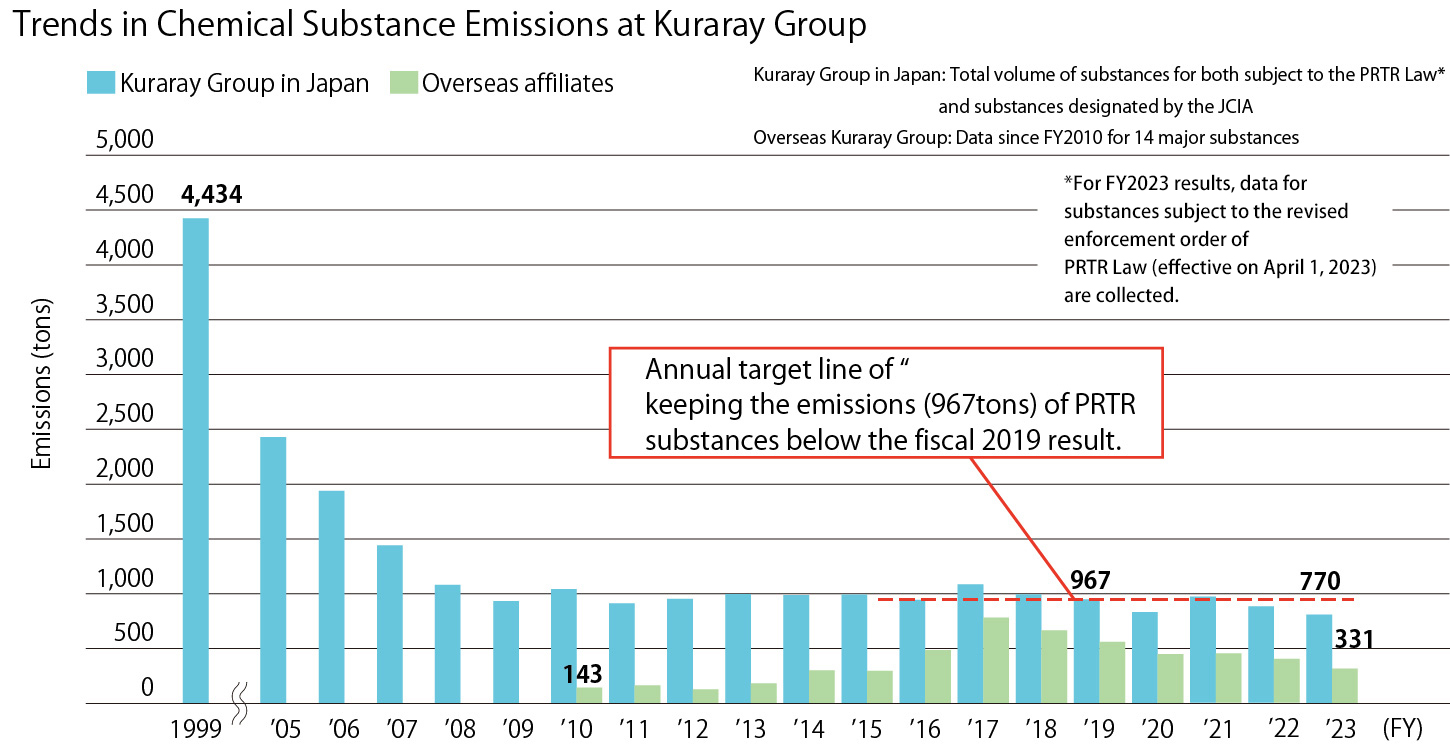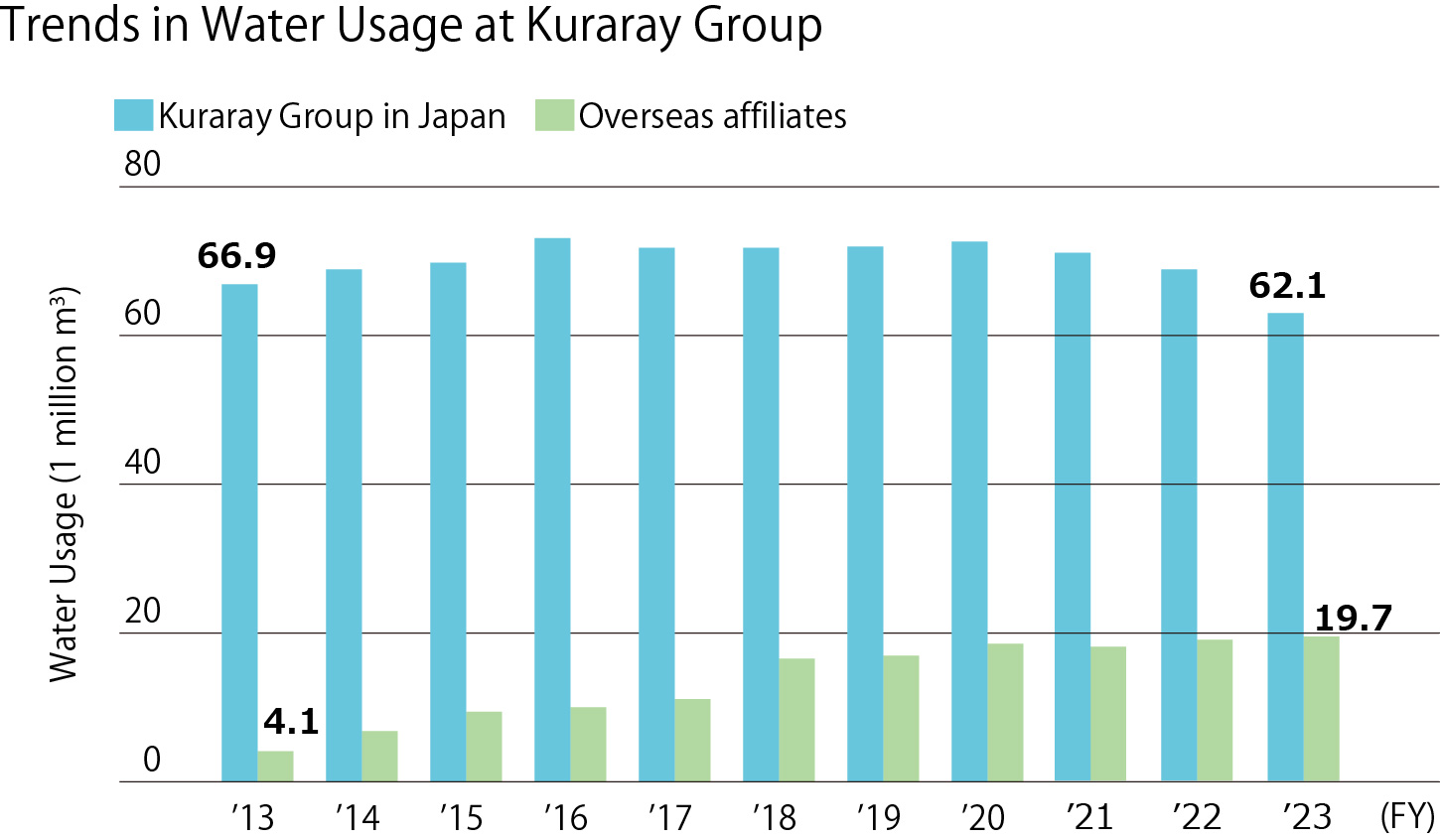The Kuraray Group in Japan had made a major capital investment until around 2008 to reduce chemical substance emissions, and has achieved about an 80% reduction compared to fiscal 1999. Since then, we have set limits on the amount of Japan Chemical Industry Association (JCIA)-designated Pollutant Release and Transfer Register (PRTR) substances* based on the concept that, even if the scale of business expands, we will not increase emissions outside production sites from the base year. To achieve this target, when considering construction of new production facilities, we examine and carry out investment projects with consideration of measures to prevent an increase in chemical substance emissions. In fiscal 2023, production activities were controlled due to lower demand from the previous year, resulting in a decrease in emissions to 770 tons from 894 tons in 2022, achieving the target of less than 967 tons. Going forward, we will continue to take measures to prevent an increase in emissions.
The policy of the Kuraray Group outside Japan is to continue to comply with the rigorous environmental regulations of the respective countries and regions where each production site is located and to conduct quantitative control. Until fiscal 2017, total emissions were on an upward trend due to the incorporation of businesses and the construction and expansion of production facilities. However, emissions have been decreasing since fiscal 2018 due to measures to expand exhaust gas treatment equipment at some sites and improve operational control. Emissions in 2023 decreased to 331 tons from 367 tons in 2022, due in part to controlled production activities.
※Substances subject to the PRTR Law and substances designated by the Japan Chemical Industry Association





